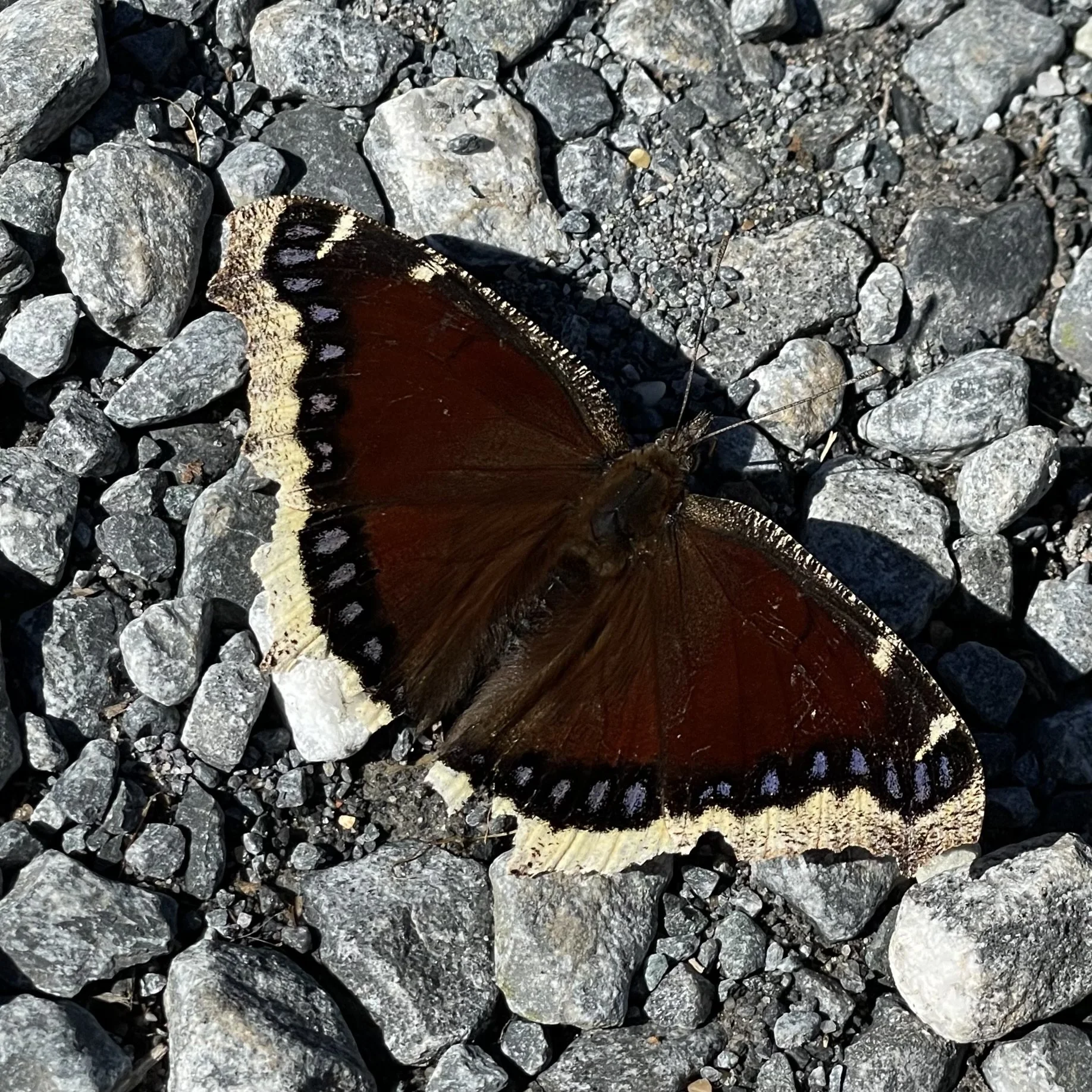Had you found yourself traveling west from Towson on I-695, the Baltimore Beltway, in the afternoon of a day in early summer of 1979, you might have caught sight of something that for a moment captured your attention. There on the shoulder of the highway were a man and a boy in full Scottish regalia standing next to a canary yellow 1967 Chevy Camaro, their kilts blowing about in the breeze as traffic whizzed by. You may not have noticed, however, that the two were yelling instructions to another boy, also in a tartan (MacPherson Hunting) lying on his back under the rear of the car attempting to reattach a dangling muffler with a leather belt.
If you have ever wondered what a Scotsman wears under his kilt, this would have been your opportunity to find out, except for one thing. The boy spread-eagle under the car had not a drop of Gael in his blood. That was 17-year-old me just then coming to terms with the knowledge that he was wholly unfamiliar with any aspect of auto repair.
There was, in fact, just one Scot in the party and he only half – his father was Irish. The man’s name was James “Jim” Quigg but to me and the other boy he was known only as Pipe Major or just the Major.
We were on our way home from a marriage celebration where the Major had been hired to pipe the wedding party down the aisle and he had brought two of his junior pipers, me and my buddy Tom Ilmanen, along for the job. By the time we left the party, the Pipe Major was “feeling no pain” as he would have put it so although I had only a learners permit, he wisely let me drive his prized Camaro. As we sped along the beltway, a rusted metal band holding the exhaust pipe in place had chosen that moment to give way and the muffler began dragging along the blacktop, forcing us to pull over.
I was the one who came up with the idea of reattaching it to the car using my belt (three years of engineering high school was not for nothing). However, doing so required puncturing a new hole in the belt using the Major’s ornamental dirk, which turned out to be not just for show but was, in fact, quite sharp.
I was just completing this delicate operation, narrowly avoiding being badly burned on the scalding exhaust pipes when a State Trooper, his curiosity no doubt aroused by the colorful scene, stopped to see if we needed assistance.
I felt a bit uneasy as I saw him pull up behind us. Although it was perfectly legal for me to drive as long as there was a licensed driver in the car, I was not certain if that was the case if that driver were tipsy.
Fortunately, the officer quickly concluded that Her Majesty’s Own Highlanders had the situation well in hand and he departed without so much as a request to see my learner’s permit or a sobriety test for the Major. I piloted the Camaro back to the Major’s house without further mishap.
I never saw my belt again.
A few years before that incident, Tom had appeared at school with an odd double reeded musical instrument. It turned out to be a practice chanter, on which students learn the melodies (if one may call them such) that one plays on the Scottish Highland Bagpipes. I had loved the bagpipes since first hearing them on the radio when I was probably around 8 or 9.
Tom had discovered that a local immigrant from Glasgow, who in his day job taught High School physics, was giving bagpipe lessons on the side – for free! I pestered Tom until he taught me the scale on his chanter and then insisted that he bring me to the Major. I showed off what I had learned from Tom and the Major accepted me as a student on the spot.
Meeting the Major was intimidating. It didn’t help that at first, I didn’t understand a word he said in his thick Scottish burr. But feeling intimidated was short-lived. He was funny, charming, and an incredible storyteller. Every Friday after school, Tom and I would walk over to the Major’s house off Northern Parkway near Roland Park. While the Major would nap (perhaps sleeping off a wee after-work dram), we’d descend to the pine paneled basement with our friend, Greg Cantori, to work on the tunes we’d been learning and to teach each other. Sometime around 6 o’clock we’d be summoned upstairs where Gracie (the Pipe Major’s mother, who had lived with him since she’d come over from Edinburgh a few years after he) served us a simple dinner —usually, boiled hot dogs. Sometimes there would be a reheated chicken pot pie from a box with defrosted potato nuggets. There was always milky tea and a biscuit (cookie).
Around 7:30 the doorbell would begin to ring. Each time it did, Sheona, the giant poodle, would grab a slipper and head to the door with it in her mouth. Every time the door opened behind it would be a friend and fellow piper. Every age, gender, religion, and skin color was represented. The dining room table would fill with chairs and the air with smoke. For those of age (not we young lads and lassies) the whisky and wine flowed freely.
It may not shock you to learn that the Major could imbibe a fair bit on these evenings and Gracie did not approve. When he thought she wasn’t looking, he would hand me his glass and whisper, “Dennis, two fingers for the Major” and I would dutifully slip away from the table and return with the requisite measure from the green bottle in the kitchen.
For the next three hours the Major would tell stories and jokes and teach. He’d teach bagpipes, of course but also elocution, acting, and poetry recitation while the assembled hung on every word and note. He was a masterful piper even after several tumblers of J&B.
Once we played well enough to join the Baltimore City Pipe Band, which he led, the Major lent us bagpipes, uniforms, and everything else we needed. Although most of the band members wore little military style caps, I sported a cheeky green tam o’ shanter when I marched. It featured a large silver ornament inset with an amber glass jewel that seemed to float above my left eye. I liked it very much.
He took us on private jobs too and always split the fee equally with us. Summers home from college the Friday night gatherings continued. He never took a nickel from any of us for lessons, food, or uniforms. Not a penny. Ever.
The Pipe Major never married. He often referred to a girlfriend named Trudy. We never met her. I have no reason to doubt that she existed nor evidence to suggest that she did. He never had any children –besides us.
After college I didn’t return to Baltimore, and I gradually lost touch with the Major though I did stop by to see him from time to time and, when I remembered, dropped him a card on his birthday (Sept 6). A few decades ago, I learned that his mother had passed away. Sheona the poodle died too. Just before I went to Rochester in June of 2015, Greg told me that the Major had moved into an assisted living facility. He was, it seemed, in the early stages of dementia. He and I went to see him and took him to lunch on the campus of the facility. He thoroughly enjoyed the meal knocking back three glasses of wine in quick succession. He had some of the old spark and charm but decades of cigarettes, whisky, and probably just age had taken a toll. He was nearly 80. It was the last time I would see him.
I had thought there would be time for more visits but five years in Rochester with few and short trips home and then Covid, which placed senior facilities off limits and well, time went by. I didn’t get back again. Recently, I learned that he had died.
There is no way of describing the gift this man gave me. I won’t try. He appeared in my life at a critical juncture between the ages of 15 and 18.
I can’t claim to have had a particularly difficult adolescence – no more so than any nerdy teen who struggles to find the place where he belongs. But like many young adults, I lacked form. I needed to know what I could do; who I was.
Jim Quigg believed in me.
That, it turns out, is everything.




